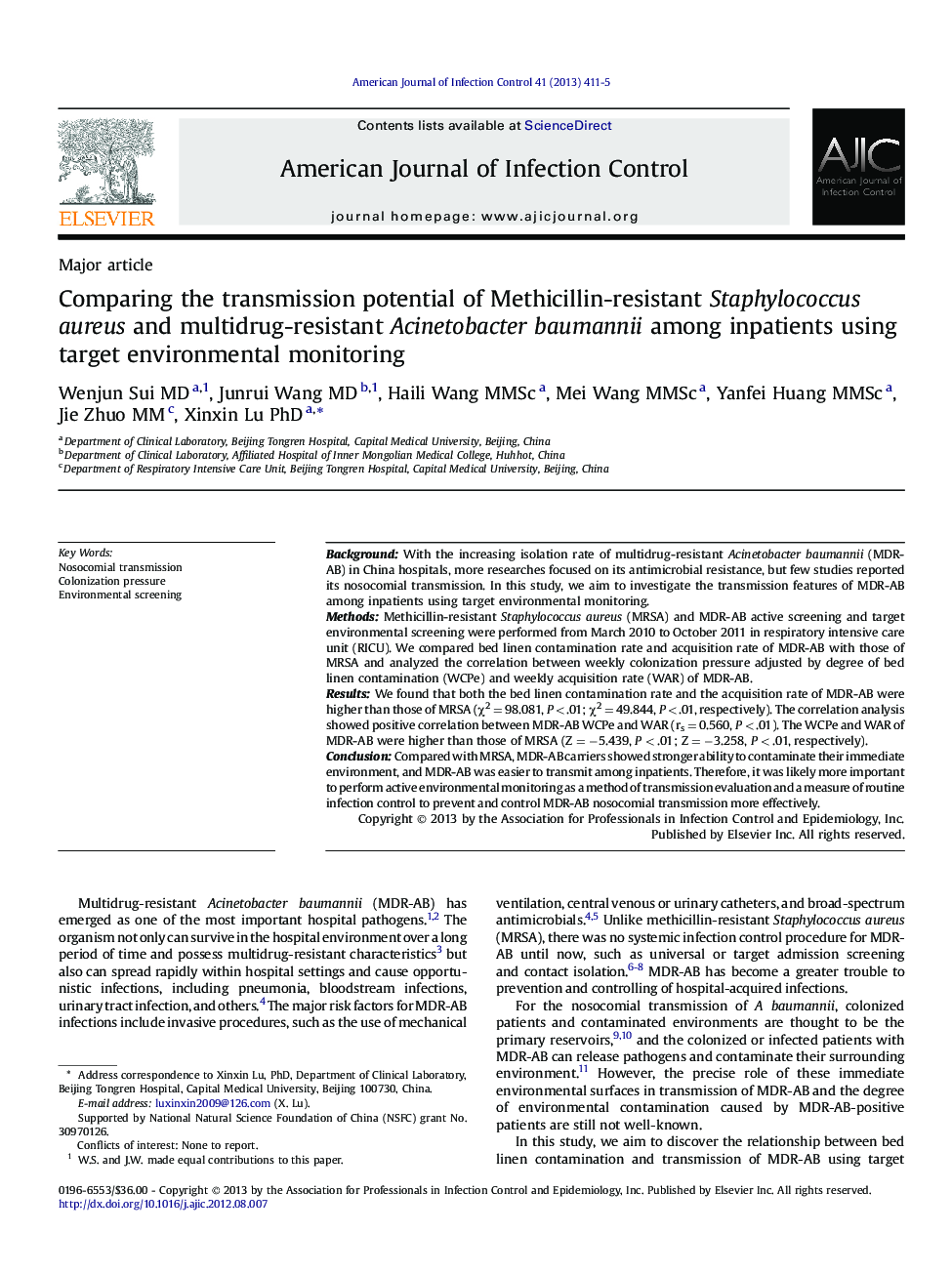| Article ID | Journal | Published Year | Pages | File Type |
|---|---|---|---|---|
| 2637321 | American Journal of Infection Control | 2013 | 5 Pages |
BackgroundWith the increasing isolation rate of multidrug-resistant Acinetobacter baumannii (MDR-AB) in China hospitals, more researches focused on its antimicrobial resistance, but few studies reported its nosocomial transmission. In this study, we aim to investigate the transmission features of MDR-AB among inpatients using target environmental monitoring.MethodsMethicillin-resistant Staphylococcus aureus (MRSA) and MDR-AB active screening and target environmental screening were performed from March 2010 to October 2011 in respiratory intensive care unit (RICU). We compared bed linen contamination rate and acquisition rate of MDR-AB with those of MRSA and analyzed the correlation between weekly colonization pressure adjusted by degree of bed linen contamination (WCPe) and weekly acquisition rate (WAR) of MDR-AB.ResultsWe found that both the bed linen contamination rate and the acquisition rate of MDR-AB were higher than those of MRSA (χ2 = 98.081, P < .01; χ2 = 49.844, P < .01, respectively). The correlation analysis showed positive correlation between MDR-AB WCPe and WAR (rs = 0.560, P < .01). The WCPe and WAR of MDR-AB were higher than those of MRSA (Z = −5.439, P < .01; Z = −3.258, P < .01, respectively).ConclusionCompared with MRSA, MDR-AB carriers showed stronger ability to contaminate their immediate environment, and MDR-AB was easier to transmit among inpatients. Therefore, it was likely more important to perform active environmental monitoring as a method of transmission evaluation and a measure of routine infection control to prevent and control MDR-AB nosocomial transmission more effectively.
